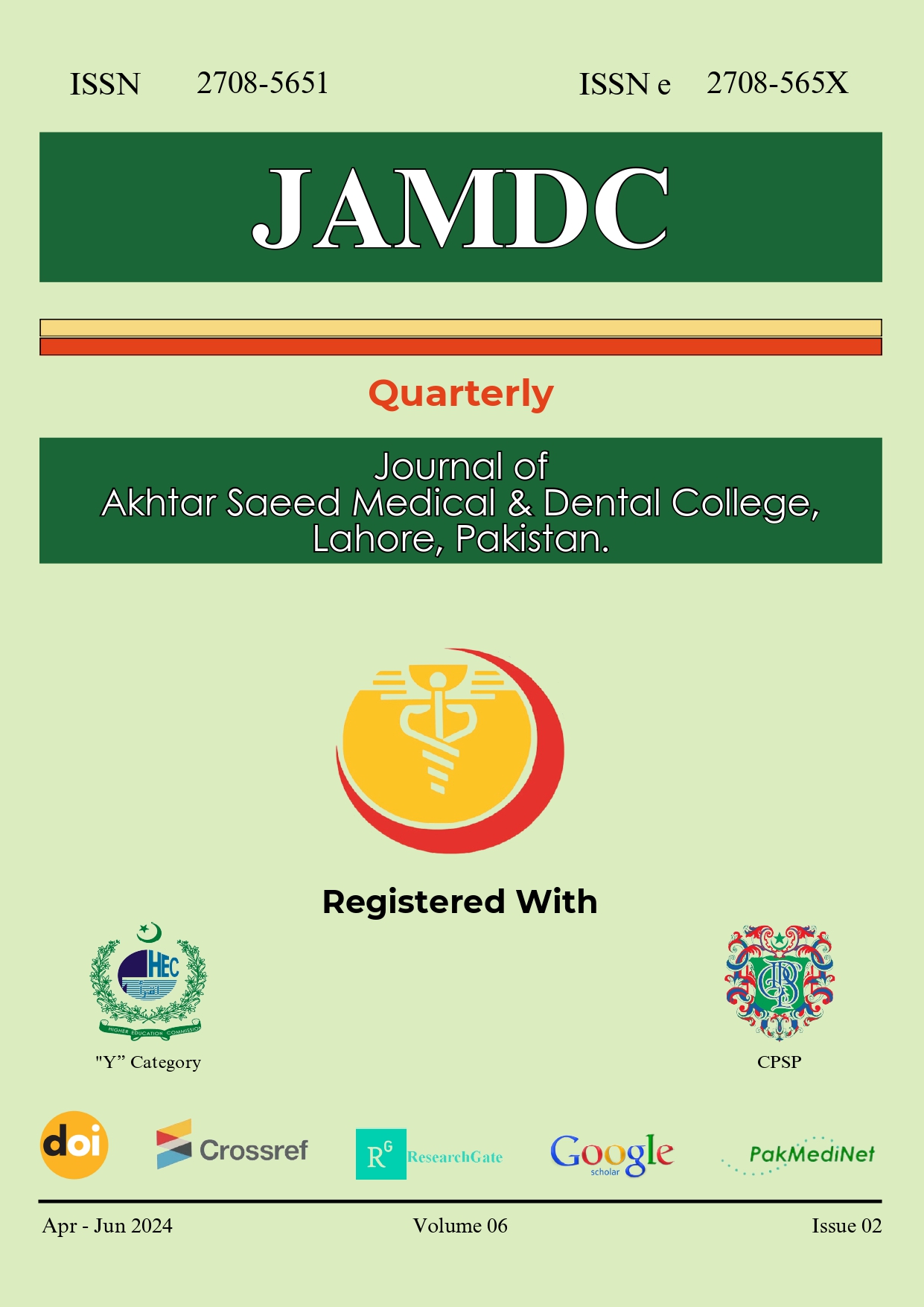Original Article BORDERLINE AMNIOTIC FLUID INDEX AND CAESAREAN SECTION FREQUENCY IN FULL-TERM PREGNANT PATIENTS PRESENTING TO A TERTIARY CARE HOSPITAL
Main Article Content
Abstract
Background:
The optimal approach to borderline Amniotic fluid index (AFI) in pregnancy is uncertain, sparking ongoing debate and controversy. This study primarily aimed to determine the frequency of cesarean deliveries in term pregnancies with borderline AFI in our clinical setting.
Material & Methods:
A cross sectional descriptive study conducted in Unit I of Obstetrics and Gynecology Department of Jinnah Hospital, Lahore, from January 2023 to June 2023. Total 90 pregnant women were selected through non probability consecutive sampling. Patients between 37
to 41 weeks with borderline were included. The cut-off values for the AFI were defined as AFI of 0-5 cm labelled as low fluid, 5.1 to 8 cm as borderline and greater than 8 cm as high fluid value, 5,16 After complete clinical evaluation, labour induction was done with Prostaglandin E2 gel vaginally, 6 hours apart two doses. All patients monitored during labour and tracked until delivery. Key outcome variable was rate of Caesarean section performed for unsuccessful induction of labour. All data was entered in SPSS version 22.
Results:
Out of 90 patients, mean age was calculated as 28.53±5.99 years. Mean gestational age was 38.47±1.08 weeks and mean AFI was 6.62±0.93 cm. Cesarean section done for unsuccessful induction of labour in 27.8 % (n=25) of women having borderline AFI while successful vaginal birth observed in 65 patients (72.2%).
Conclusion:
In our clinical environment, the rate of caesarean section is not substantially elevated in women with borderline AFI at term that experienced failed induction

